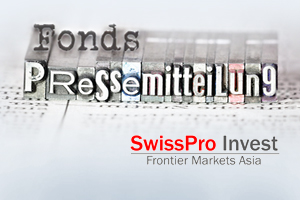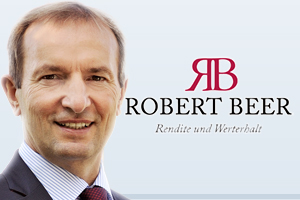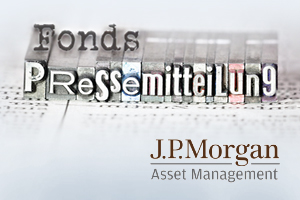 SwissPro | Frankfurt, 16.12.2015.
SwissPro | Frankfurt, 16.12.2015.
Bangladesh – Steady growth, Economic outlook.
We expect economic growth to inch up to 6.6% in FY16 from 6.5% in FY15 (year ending in June). Bangladesh is entering 2016 with sound macroeconomic fundamentals, including slower inflation, a stable exchange rate, a manageable fiscal deficit, and a balance-of-payments surplus over the past year. There have been no significant political strikes since March 2015, which is supportive of economic growth. On-the-ground feedback suggests a low chance of political disruptions on the scale seen in H2-FY15.
“While higher wages are a tailwind to consumption, slowing remittances and apparel-sector restructuring are possible headwinds.”
Consumption (c.78% of GDP) is likely to support GDP growth in FY16 after publicsector wages were nearly doubled. Salary disbursements with arrears are now likely to start in Q2-FY16, having been delayed from 1 November 2015 due to procedural issues. This should keep consumption demand high in H2-FY16, offsetting the two key headwinds to consumption growth: slowing remittance growth and restructuring in the ready-made garment (RMG) sector. Remittances were flat in the first four months of FY16 (through October 2015). If crude oil prices remain low, this poses a risk to remittances.
Bangladesh’s RMG sector is undergoing restructuring, and rising costs have squeezed margins. This is likely to impact wages. Bangladesh taka (BDT) strength against major currencies, especially the euro, has led to a loss of competitiveness
relative to other garment-exporting countries. Weaker global growth prospects, especially in the US (c.20% of exports), are also likely to put pressure on exports. We expect investment to remain at c.27-28% of GDP in FY16 (in line with the 10 year average), with government investment growing at c.6%.
“Private investment is likely to remain weak in 2016.”
We expect no increase in private-sector investment given that the business climate has not shown signs of significant improvement. Bangladesh slipped two places in the World Bank’s Ease of Doing Business indicators for 2016, and is ranked 174th out of 189 countries.
“Slow progress on infrastructure projects.”
Inadequate infrastructure remains a key bottleneck to growth. The government is the primary driver of infrastructure investment, and progress has been slow. The fourlaning of the Dhaka-Chittagong highway – a critical project – has faced delays and is now likely to be completed by December 2016. The Dhaka-Chittagong industrial belt encompasses c.70% of Bangladesh’s formal economy and the project is expected to provide a boost to economic growth in FY17. Other critical infrastructure projects, including the Padma Bridge, are still at the very early stages.
Policy
We expect no change to policy rates in FY16, as inflation remains close to Bangladesh Bank’s (BB) target and growth is expected to hold up well. Inflation has remained in the 6.2-6.4% range since January 2015. We forecast average inflation in FY16 at 6.2%, the same as BB’s target, on lower commodity prices and tight monetary policy. Tight monetary policy is likely to contain credit growth and thus inflation. BB is also likely to remain watchful of upward inflationary pressure from higher wages and electricity prices in H2-FY16.
“The fiscal balance is likely to turn to a deficit when the government disburses higher wages.”
The government managed its finances well in Q1-FY16. It reported a fiscal surplus of BDT 11.6bn thanks to low expenses; this compared with a deficit of BDT 17.4bn in Q1-FY15 and a budgeted deficit of BDT 867bn for full-year FY16. We expect the budget to turn to deficit once the government starts disbursing higher public wages and arrears in Q2-FY16. Tax collection rose 9.5% y/y in Q1-FY16, c.20% lower than the budget target. Low revenue collection was offset by even lower expenditure – development spending during the quarter was the lowest in four years.
We see challenges to the government’s revenue growth target of 30% y/y in FY16, including falling imports, sluggish exports and low prices of various imported items. Our fiscal deficit forecast for FY16 is 5.0% of GDP. Deteriorating bank asset quality remains a concern. The NPL ratio was high at 9.7% as of June 2015. While the FY16 budget has set aside BDT 50bn (0.3% of GDP) for bank recapitalisation, this is much lower than IMF estimates of 1.0-3.5% of GDP.
Politics
“No widespread political disturbances have been seen since March.”
The political situation is currently stable, with no significant strikes since March 2015. With major opposition leaders having left the country for the time being, we do not expect widespread disruptions of the kind seen in H1-FY14 and H2-FY15. The lack of an agreement between the major parties leaves the door open for a revival of tensions in the coming quarters, however.
Market outlook
We have a Positive outlook on T-bonds on declining inflation and a manageable fiscal deficit. The BDT fell by c.1% in the first half of November after 10 months of stability due to a shortage of USD in the interbank market. We expect this decline to be short-lived, as the current account and balance of payments were in surplus in Q1-FY16 on a narrowing trade deficit. We expect the current account to turn marginally negative for the rest of FY16 as remittances come under pressure. We forecast the BDT at 78.20 at end-December 2015, weakening to 82.00 by endDecember 2016 on a widening current account deficit.


